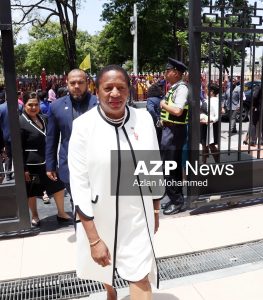By Sue-Ann Wayow
TRINIDAD and Tobago may soon be able to convert carbon found in mangroves into cash.
The Ministry of Planning and Development in a press release on Sunday stated that research was being concluded by the Institute of Marine Affairs (IMA) into the carbon content of mangrove soils.
The fifth national report of T&T to the Convention on Biological Diversity (CBD), which was presented to the ministry, assessed the natural capital of the country’s upland and coastal ecosystems.

The report stated that the water purification services was valued at approximately US$88 million annually. Northern Range forest soil retention services was valued at US$622 million annually and shoreline protection provided by coastal ecosystems for T&T was in the range of US$3 and US$133 per hectare per year.
The ministry stated that while the benefits of the natural capital accrue to residents of T&T, the country does not directly earn money from these ecosystem services. The Mangrove Soil Carbon Sequestration Assessment, a blue carbon project, funded by the British High Commission will provide essential data, putting a concrete monetary value on the carbon currently stored in the mangrove forests, from which Trinidad and Tobago can earn foreign exchange in the future.
The ministry stated, “Mangrove forests are one of the most carbon dense ecosystems on earth, with over 90% of their carbon being stored in the mangrove soils.”

The Blue Carbon project, which will soon be completed, was initiated in January 2021 and involves the analysis of soil cores from various mangrove sites around the country, including sites at the Caroni Swamp and Nariva Swamp.
“Research sites were carefully selected to cover the wide gamut of environmental variables faced by mangroves. The IMA will therefore gain an understanding not only of which of Trinidad and Tobago’s mangrove forests store the most carbon, but also of the factors that contribute to variances in the amount of carbon stored in mangrove soils,” the ministry added.
The soil carbon project builds upon a previous study conducted in 2020 by Professor John Agard of the University of the West Indies in collaboration with the IMA. That study measured the carbon content of mangrove trees specifically. Together with that research, the IMA is set to develop the most accurate estimation of Mangrove Forest Carbon Storage ever done for Trinidad and Tobago, the ministry stated. The project is also being conducted in collaboration with researchers, academics and government bodies from Guyana and Suriname and will give the first ever measurements of mangrove soil carbon for the countries involved with more rigorous data collection qualifying countries for higher pricing tiers.
The Planning Ministry also stated that data will be used to inform evidence-based conservation policies, contribute to T&T’s commitments under the Paris Agreement, and will be publicly available for use by academia and companies who want to make mangrove restoration part of their corporate policy.
![]()











